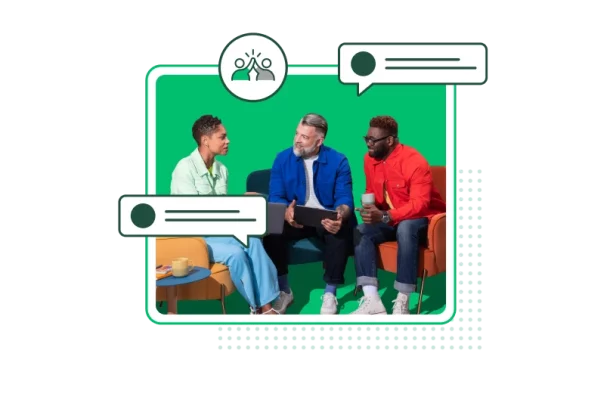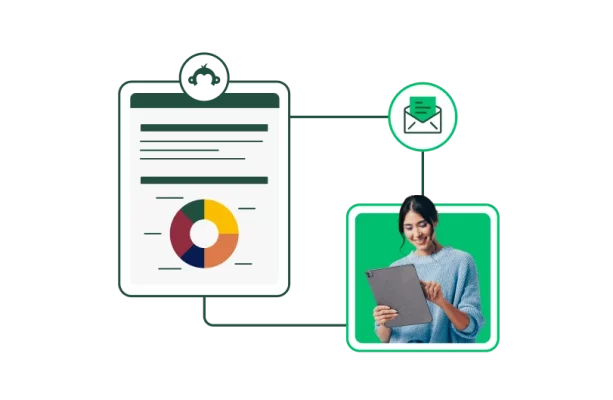How employee recognition programmes work and why they matter

As an employer or HR professional, you will already be aware that it’s important to retain high-performing employees. However, even your best or most dedicated employees may seek other opportunities if they see their colleagues being laid off or think their job may be insecure.
Gallup recently revealed that 51% of U.S. employees are considering leaving their jobs. Also, only 23% of U.S. employees strongly agree that they receive the right amount of recognition for their work. Those numbers do not look good for employee retention and loyalty.
Although you can’t resolve this problem overnight, you can make progress by rewarding employees for their contributions. Why is employee recognition important? Our research shows that 82% of U.S. employees consider recognition an essential part of their happiness at work.
Organisations across industries use employee recognition programmes to improve employee engagement and satisfaction. Keep reading to learn how to plan and launch a feedback-driven employee recognition programme.
An employee recognition programme allows businesses to praise the hard work of their top employees and to thank staff for going that extra mile.
What is employee recognition?
Employee recognition is the process of acknowledging, celebrating and sometimes rewarding employees for their work. This recognition is usually associated with a specific event or period when the employee exceeds performance expectations.
Why create an employee recognition programme?
Praising employees for a job well done can improve overall job satisfaction. However, to make employee recognition a keystone of your employee experience, you need to create a programme that consistently celebrates the exceptional work of employees.
Benefits of employee recognition
- Retain talent: You can build a healthy work culture by issuing employee recognition awards on a regular basis. Those rewards will also have a significant impact on employee engagement and retention. SurveyMonkey research reveals that 63% of U.S. employees who are always or usually recognised at work are unlikely to look for a new job within the next three to six months.
- Attract top talent: In a competitive job market, a strong employee value proposition can help your company stand out. Companies that commit to employee recognition will improve employer branding and are more likely to attract candidates.
- Decrease costs: Employee turnover varies from one organisation to the next and replacing an employee may cost up to 150% of the salary allocated to a specific role. This makes sense when you consider the money that goes into recruiting for a role, interviewing multiple candidates, paying hiring bonuses and implementing onboarding, etc.
- Reduce burnout: You can improve employee morale by using an effective employee recognition programme. Our research shows that 94% of employees who find their work meaningful and 93% of employees who are proud of their work haven’t experienced work burnout within the last six months. Those who have experienced burnout during the last six months say that they don’t find their work meaningful (75%) and aren’t proud of their work (80%).
- Boost productivity: When you show employees that you are invested in them, they are more likely to invest in you. A recent Gallup Poll reveals that highly engaged employees are 17% more productive and have a 41% lower absenteeism rate.

How to create an employee recognition programme
Because an employee recognition programme takes up time and resources, you’ll need to show the potential impact of your work. Here’s how to prepare a results-driven plan that will help you get leadership buy-in and support.
Set goals and determine your scope
What does success look like for your employee recognition programme? At a high level, success might mean increasing key employee satisfaction metrics like your employee Net Promoter Score® (eNPS®). This is the industry-standard employee loyalty metric that asks how likely it is that employees would recommend your company as a great place to work. (Make sure you add an open-ended question to your eNPS survey to capture any feedback about your employee recognition programme.)
Similarly, you can use an employee engagement survey to monitor your programme’s impact on employee motivation and job satisfaction. You can benchmark employee engagement data and track the extent to which employees agree or disagree with statements such as:
- “I am inspired to achieve my goals at work.”
- “I am determined to give my best effort at work each day.”
- “Management within my organisation recognises strong job performance.”
You can also connect your programme to HR metrics or key performance indicators (KPIs) such as employee retention and turnover. Tracking this data, plus employee feedback, can give you a fuller picture of your programme’s impact.
Once you’ve set your goals, outline the terms of your programme to determine its scope. Will you recognise employees on a quarterly, monthly or weekly basis? Will this recognition be company wide or private?
Create an outline of how managers can give praise. All recognition should be:
- Timely. Give praise upon the completion of a project rather than months after people have forgotten about it.
- Regular. Sporadic praise may feel like an afterthought. Be purposeful when constructing your employee recognition programme.
- Visible. Ensuring that other employees see that you are recognising a particular employee can make them feel even more appreciated.
- Value based. Words can be a great way to boost morale and make people feel as though they are part of the team. However, there are many other ways of recognising effort.
Decide how to give employee recognition
The next step is to work out how you are going to recognise employees for their great work. Before you decide on a reward structure and method for delivering feedback or praise, send out an employee feedback survey. It’s likely that your employees will have strong opinions about how they would like to be rewarded.

Employees value and appreciate different forms of recognition. By asking for their feedback, you can offer employee recognition awards that have a greater impact.
Types of employee recognition
- Top-down recognition: A manager or senior leader recognises an employee.
- Peer-to-peer recognition: Team members nominate their peers to be rewarded for their great work and contributions.
- Social recognition: Companies publicly praise an employee on a social media channel.
- Monetary recognition: A company rewards employees with a cash bonus or gift card.
Employee recognition examples and tools
You can combine each of these structures with a different reward, such as a bonus, a recommendation for a promotion, a salary increase or even public appreciation. You can also use several other formats of employee recognition or employee engagement ideas.
According to SurveyMonkey research, the most popular way to receive positive feedback is during one-to-one meetings. Other popular formats are team meetings and public messaging channels.
Here are some other employee recognition ideas for your organisation:
- Send employees an employee recognition survey on a regular basis, encouraging them to acknowledge their colleagues. You can conduct the survey regularly or link to it on the company wiki, always keeping it open for nominations.
- Implement a peer-to-peer recognition platform such as Bonusly to make it easy for your employees to celebrate each other. Your employees can award points to a colleague, describe their contribution and thank them publicly via your company’s messaging app.
- Feature an employee on your company blog or social media platform. Celebrating an employee’s achievements will make them feel proud, showing prospective candidates that the company truly values its employees.
- Although verbal praise is certainly powerful, many employees prefer monetary compensation. We found that 57% of employees in the U.S. want to be recognised with a cash bonus or pay rise. If you want your programme to be effective, consider reinforcing your recognition with a gift, bonus or special perk.
Set a budget and policies for your employee awards
The total budget that you create for your employee recognition programme will have an impact on the rewards that you are able to offer. Before determining your overall rewards budget, you must factor in the cost of a survey platform or other recognition software.
You’ll also need to consider how much you can spend on employees in the form of gift cards, a cash bonus or something else.
At this stage, you should also outline the policies for your programme. These policies will act as a centralised hub where employees can learn more about the incentive. You could also specify how an employee can nominate their boss, or flag the hard work of a colleague, for an award through the programme.
Introduce your employee recognition programme
Once you’ve built your programme, set a budget and implemented the software and systems to help it run smoothly, it’s finally time to launch it. Introducing the programme is an exciting moment that you should share with your employees.
Your business could send a company-wide email or ask each department head to introduce the employee recognition programme to their respective teams. You can even kick off the programme by recognising and rewarding the first employee from each team or department.
Include references to the programme in your onboarding or new employee training. Try to adhere to the schedule or cadence that you outlined on launch day. Regular announcements will motivate employees and build anticipation.
Track and analyse employee reward programme results
Spotting key trends and shifts in your internal metrics will help you contextualise the success of your programme. Make sure you answer the following crucial questions about your programme:
- Are we meeting the KPIs that were outlined in the planning stage?
- Has there been an improvement in employee productivity?
- Has there been a change in employee engagement?
- Are employees happy with the rewards that we are offering?
Revisit and revise your programme often
Upon successfully launching your employee recognition programme, you’ll start to give out rewards and acknowledge the hard work that your employees do for your business. But this is only the beginning of the story. You’ll need to revisit your programme to improve it over time.
Collect employee feedback regularly to see whether your programme is having a positive impact or whether you need to make changes. You can use employee pulse surveys, which are shorter surveys designed to give you quick insights. If you notice that several employees highlight an issue with the programme, you can prioritise that problem for your next iteration.
Remember to share any responses to feedback that you act upon. This will show employees that you’re listening to their feedback and help further demonstrate the success of your employee recognition programme to stakeholders.
Boost employee engagement with a feedback-driven recognition programme
If you give your employees the appreciation that they deserve, it’s more likely that they will give you loyalty in return. Start by making employee recognition a core part of your workplace culture. Learn how SurveyMonkey helps you quickly collect employee feedback and gain the insights that you need to boost employee engagement.
Net Promoter, Net Promoter Score and NPS are trademarks of Satmetrix Systems, Inc., Bain & Company, Inc. and Fred Reichheld.
Discover more resources

Attract, engage and retain top talent with data-driven insights
Create HR surveys with SurveyMonkey to gather feedback, boost engagement and improve workplace culture. Streamline HR processes with customisable templates.

Help employees thrive with learning programmes that drive real growth
Measure L&D impact with powerful survey software. Gather feedback, track growth and improve employee development with insights that support long-term success.

Inclusion and Belonging Survey Software
Foster a more inclusive workplace with survey software. Measure belonging, gather honest feedback and build a culture where every voice matters.

Application Form Template
Efficiently gather, store and review applications with our comprehensive application form template.